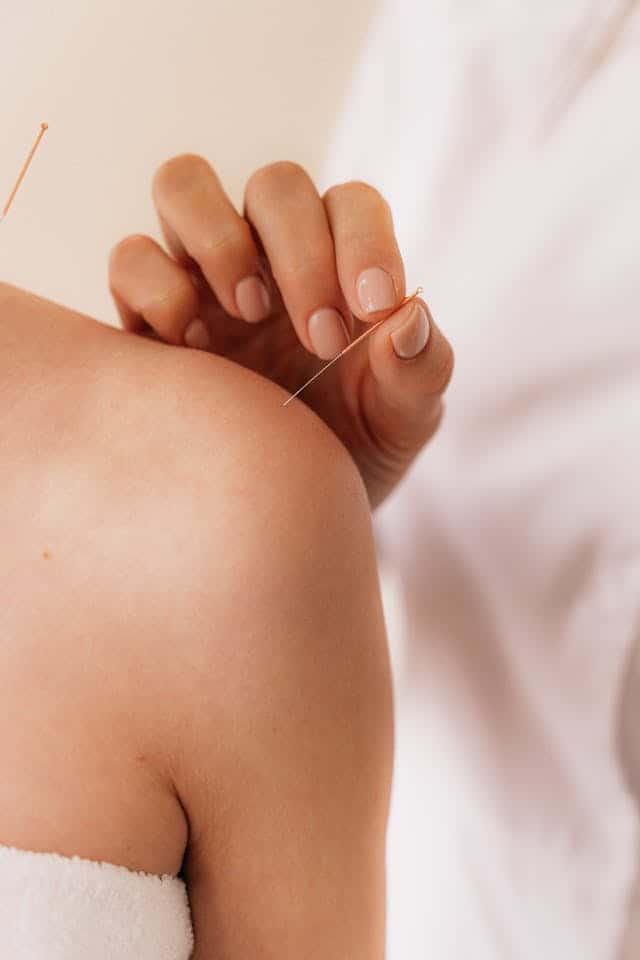
Understanding the Difference Between Acupuncture and Dry Needling: Which Is Right for You?
At Feel Good Balham, our goal is to help you achieve balance, relief, and lasting wellbeing through holistic and evidence-based therapies. Two treatments that often draw curiosity — and sometimes confusion — are acupuncture and dry needling. Both use fine, sterile needles inserted into the body, but they come from very different traditions and serve different therapeutic purposes.
Let’s explore what sets them apart, how each works, and who can benefit most.
Acupuncture is a key component of Traditional Chinese Medicine (TCM), a healing system that has been practised for thousands of years. It is based on the concept of Qi (pronounced “chee”), the vital energy that flows through pathways called meridians in the body. When Qi becomes blocked or unbalanced, it can lead to pain, illness, or emotional distress.
During an acupuncture session, ultra-fine needles are inserted at specific points along these meridians to restore the natural flow of energy. The aim is to bring the body back into balance and stimulate its innate healing response.
Benefits of Acupuncture:
* Reduces chronic pain (such as back pain, arthritis, migraines)
* Supports stress relief and emotional wellbeing
* Improves sleep and energy levels
* Aids digestion and hormonal balance
* Strengthens the immune system
Who It’s For:
Acupuncture is suitable for most people, including those seeking support for long-term health concerns, emotional balance, or preventative care. It’s gentle, deeply relaxing, and ideal for anyone looking to treat the body as a whole — rather than just isolated symptoms.
Dry needling is a modern, Western technique primarily used by physiotherapists, osteopaths, and sports therapists. Unlike acupuncture, it does not follow the meridian system or traditional energy theories. Instead, dry needling focuses on muscle physiology and trigger points — tight knots of muscle that can cause pain and restrict movement.
During treatment, a practitioner inserts a fine needle directly into the trigger point or tension area to release the knot, improve blood flow, and restore muscle function. The term “dry” refers to the fact that no medication is injected — the needle alone stimulates healing.
Benefits of Dry Needling:
* Relieves muscular pain and tension
* Enhances flexibility and range of motion
* Accelerates recovery from injury
* Reduces headaches and referred pain patterns
* Complements physiotherapy and sports rehabilitation
Who It’s For:
Dry needling is particularly effective for those experiencing sports injuries, muscle tightness, or postural pain. It’s often used by athletes, office workers with repetitive strain, and anyone dealing with chronic musculoskeletal discomfort.
Which Treatment Should You Choose?
Both acupuncture and dry needling can be highly effective — the right choice depends on your goals.
* If you’re seeking whole-body balance, stress relief, or support for internal health issues, acupuncture is often the best fit.
* If you’re dealing with acute or chronic muscular pain, sports injuries, or postural issues, dry needling may offer faster results.
At Feel Good Balham, our experienced therapists can assess your individual needs and recommend the most suitable approach.
Experience Healing and Balance in London
Located in the heart of Balham, SW London, Feel Good Balham offers a range of holistic therapies designed to restore health, vitality, and peace of mind. Whether you’re new to acupuncture, curious about dry needling, or simply seeking a more balanced approach to wellness, our team is here to support you every step of the way.
Acupuncture |
Dry Needling |
|
|---|---|---|
| Origin | Traditional Chinese Medicine | Modern Western medicine |
| Focus | Balancing energy (Qi) through meridians | Releasing muscle trigger points |
| Approach | Holistic — treats the whole body | Localised — targets specific muscles |
| Experience | Gentle and calming | Can create a brief “twitch” response |
| Typical Goal | Restoring balance and wellbeing | Reducing muscle pain and improving movement |
